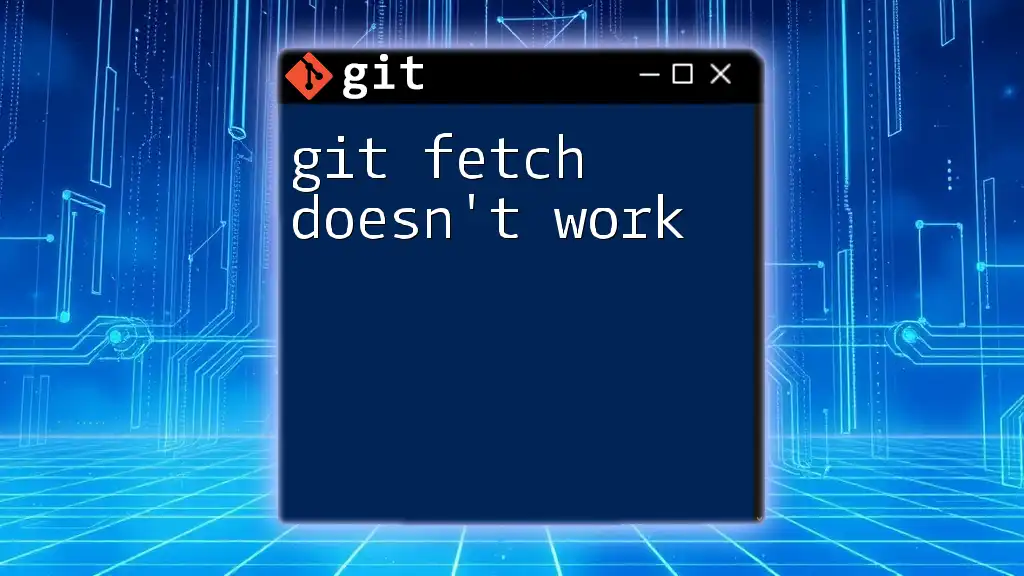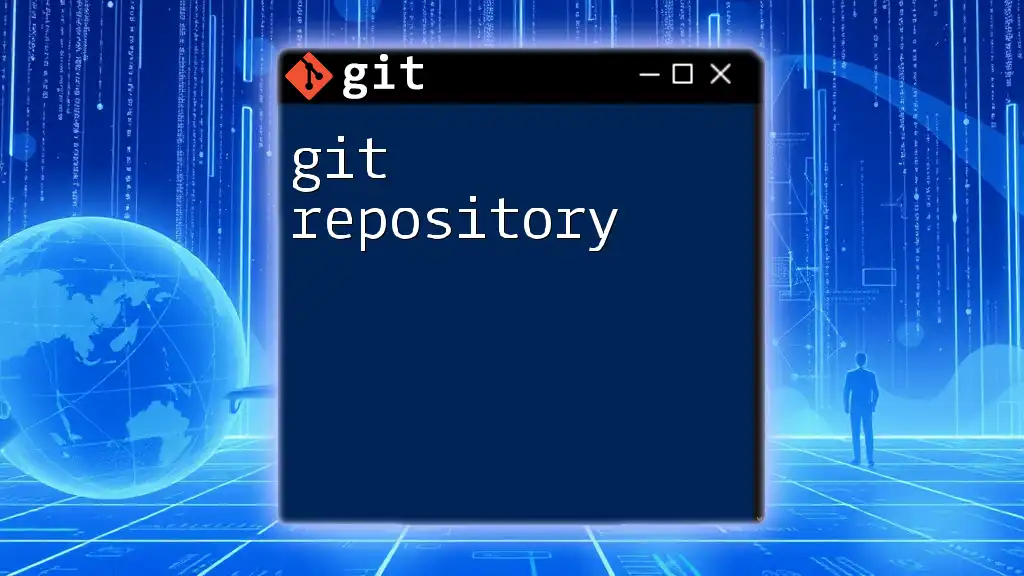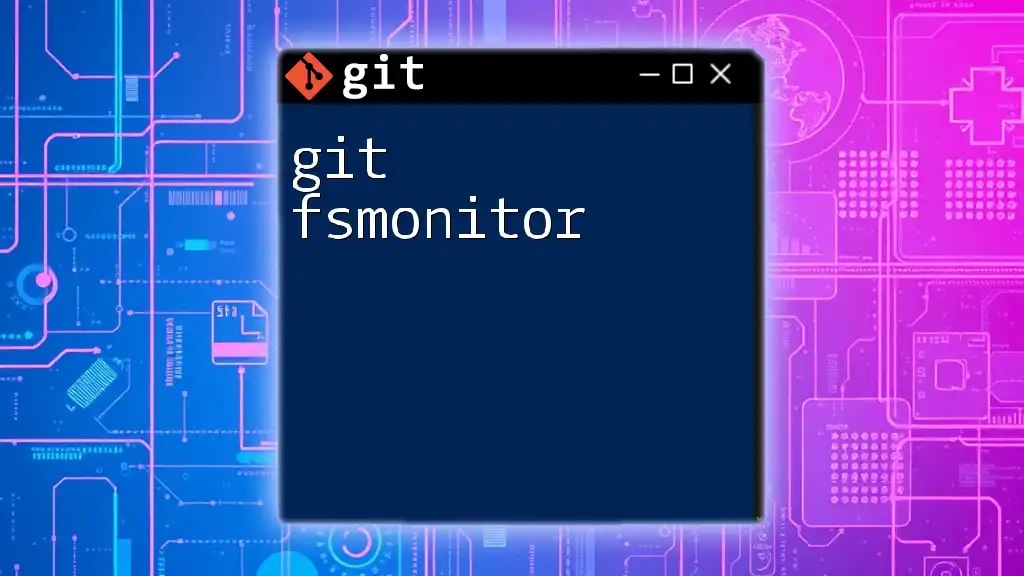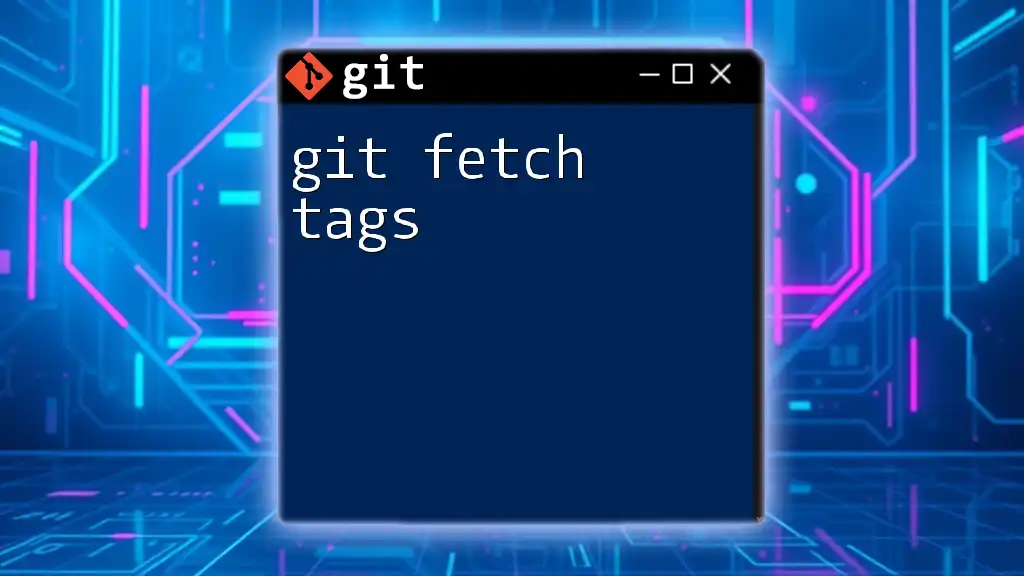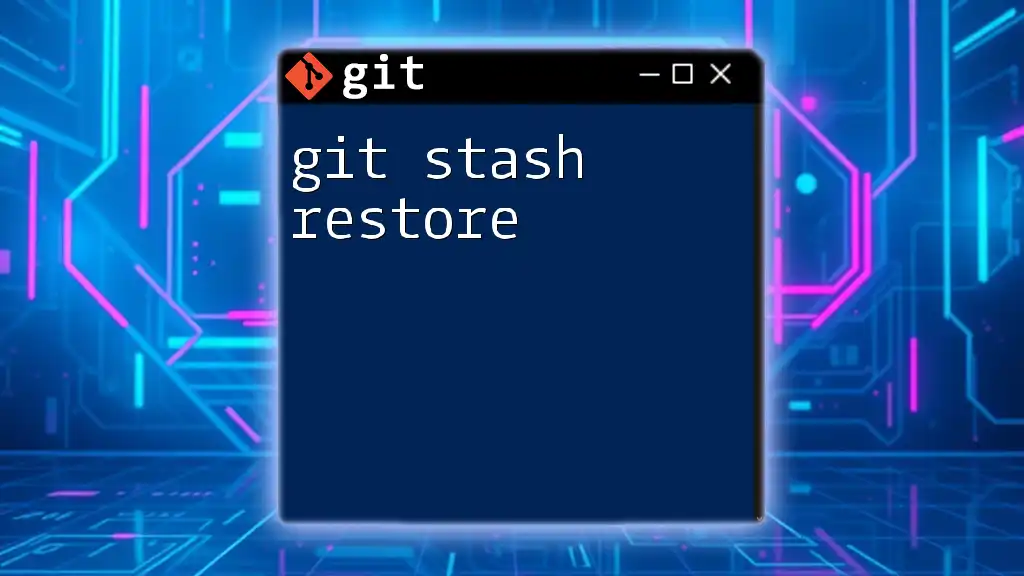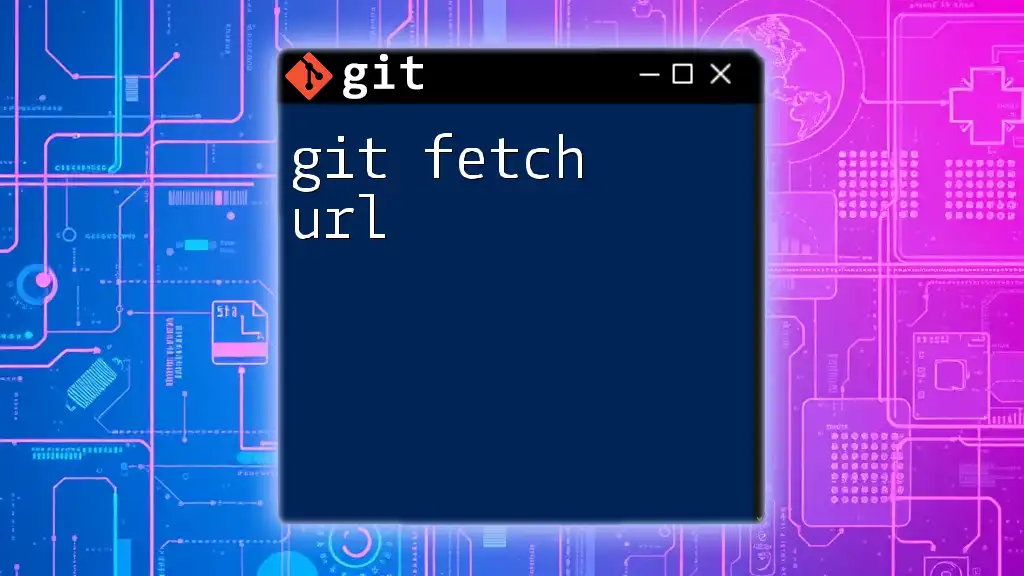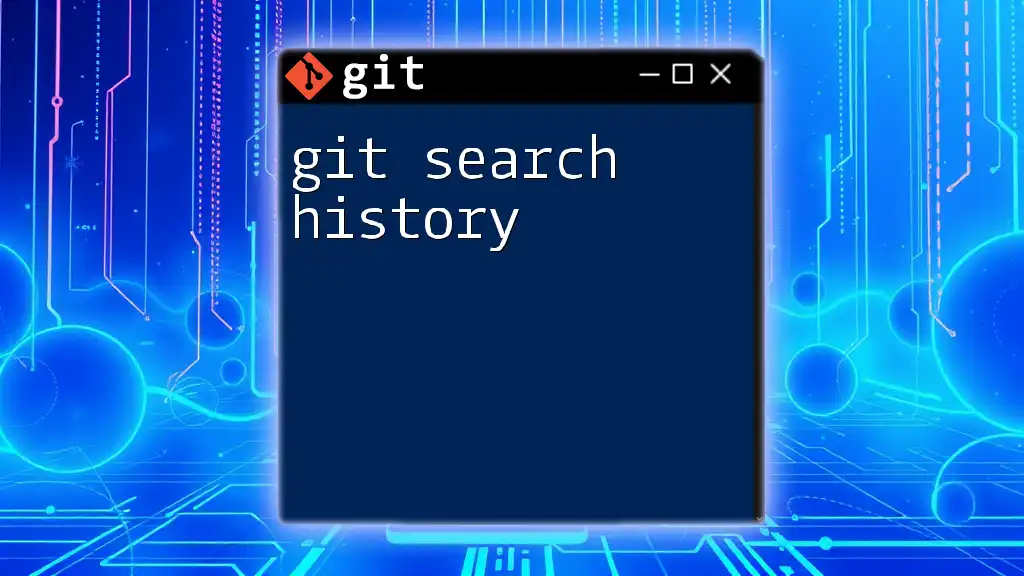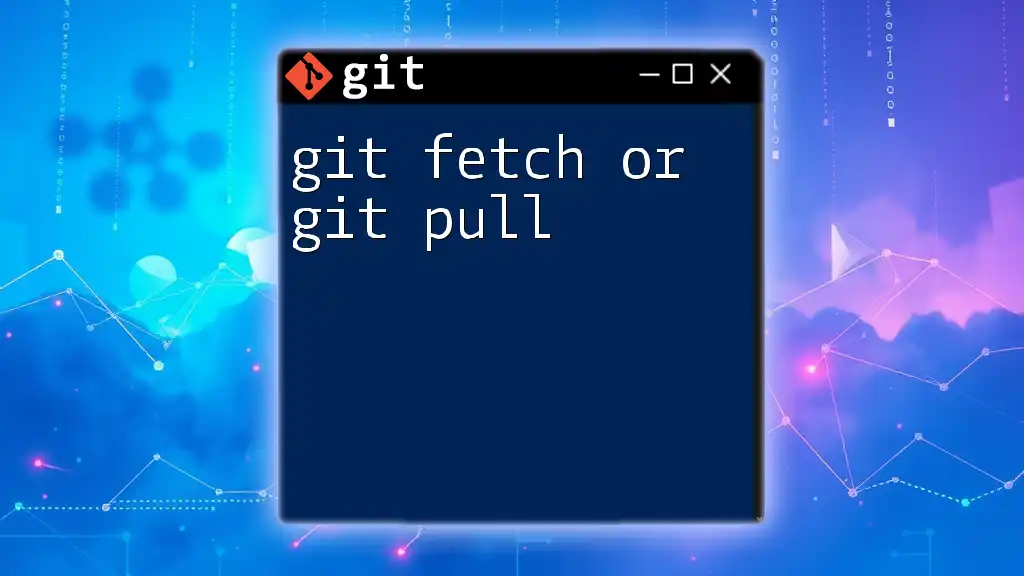When `git fetch` doesn't work, it may be due to network issues or incorrect repository URLs, which can be checked and resolved with the command below.
git remote -v
Understanding Git Fetch
What is Git Fetch?
`git fetch` is a command that allows you to update your local repository with changes from a remote repository. Unlike `git pull`, which not only fetches the updates but also merges them into your local branch, `git fetch` simply downloads the new data. This means that it allows you to review changes before incorporating them into your work. Understanding how to effectively use `git fetch` is crucial for smooth collaboration in projects.
How Git Fetch Works
When you execute `git fetch`, Git connects to the remote repository and retrieves any updates. These updates include changes to branches and tags. However, it does not modify your local files or branches. Instead, it updates your remote-tracking branches, so you can inspect the changes without altering your working directory. This makes `git fetch` a safer option when you're unsure about the incoming changes.
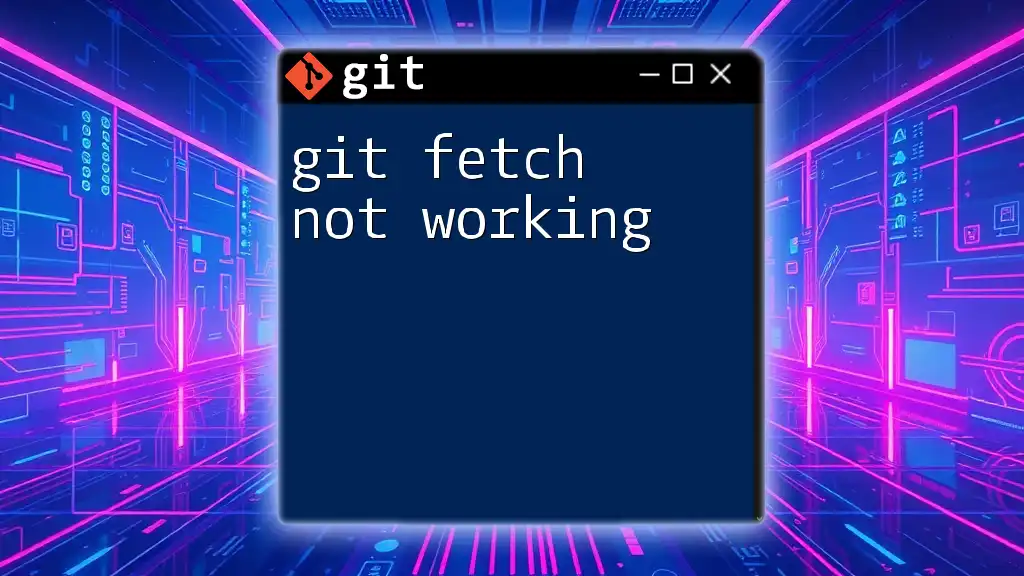
Common Reasons Why Git Fetch Doesn't Work
Network Issues
One of the most common reasons git fetch doesn't work is due to network connectivity problems. If you’re unable to reach the remote repository, fetching will fail.
Troubleshooting Steps:
- Check Your Internet Connection: Ensure that your network is operational and stable.
- Use the ping command to test server availability. Run:
ping github.com
If you receive responses, your connection is likely fine. If not, check your network settings.
Authentication Errors
Problems related to user credentials could also prevent git fetch from functioning correctly. Everyday issues include expired tokens or SSH key problems.
Common Causes:
- Expired access tokens.
- Invalid SSH keys.
Troubleshooting Steps:
- Verify Your Git Configuration: Ensure your credentials are set correctly.
- Check SSH Keys: You can do this with the following command:
ssh -T git@github.com
If you’re successfully authenticated, you should see a message like “Hi username! You've successfully authenticated, but GitHub does not provide shell access.” If not, you may need to generate a new SSH key or update your credentials.
Remote Repository Configuration Issues
Another frequent issue arises from incorrect remote settings. If your local repository cannot locate the remote repository, git fetch will not work.
Troubleshooting Steps:
- Checking Your Remote Configurations: Use the following command to review the URLs associated with your remotes:
git remote -v
- Update Remote URL: If the URL is incorrect, use:
git remote set-url origin <new-url>
This allows your local repository to point to the correct remote location.
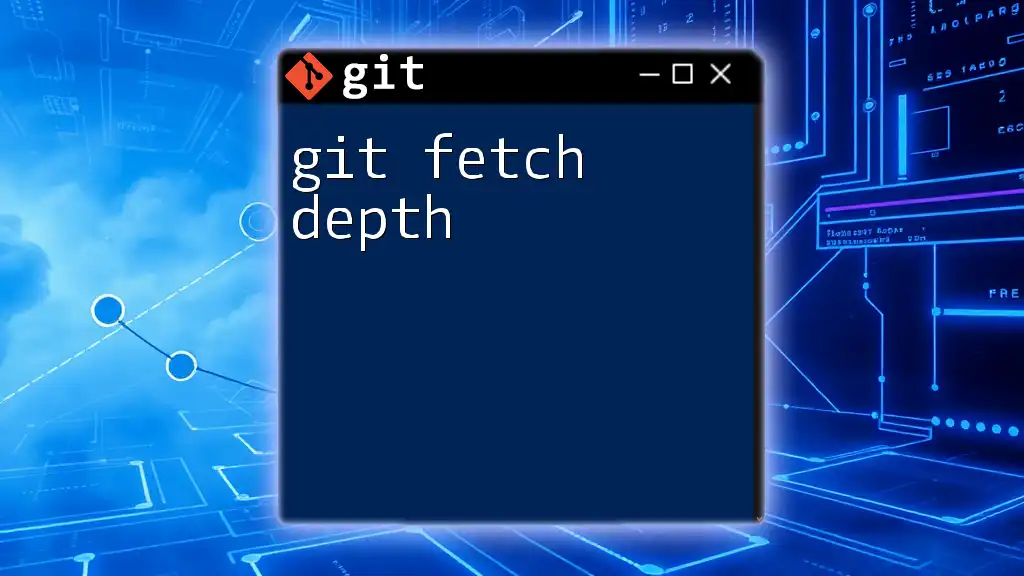
Diagnosing `git fetch` Problems
Checking the Error Output
When `git fetch` fails, it typically outputs an error message. Understanding these messages can guide you toward resolving problems.
Examples of Common Errors:
- "Could not resolve host." This indicates a network issue or incorrect URL.
- "Permission denied." This suggests an authentication problem, such as incorrect credentials.
Verbose Mode for Detailed Logs
You can gain further insight into what happens during a fetch by using the `--verbose` option. This provides you with detailed logs that can help track down the issue:
git fetch --verbose
When you run this command, pay attention to the output for indicators of where the issue might lie.
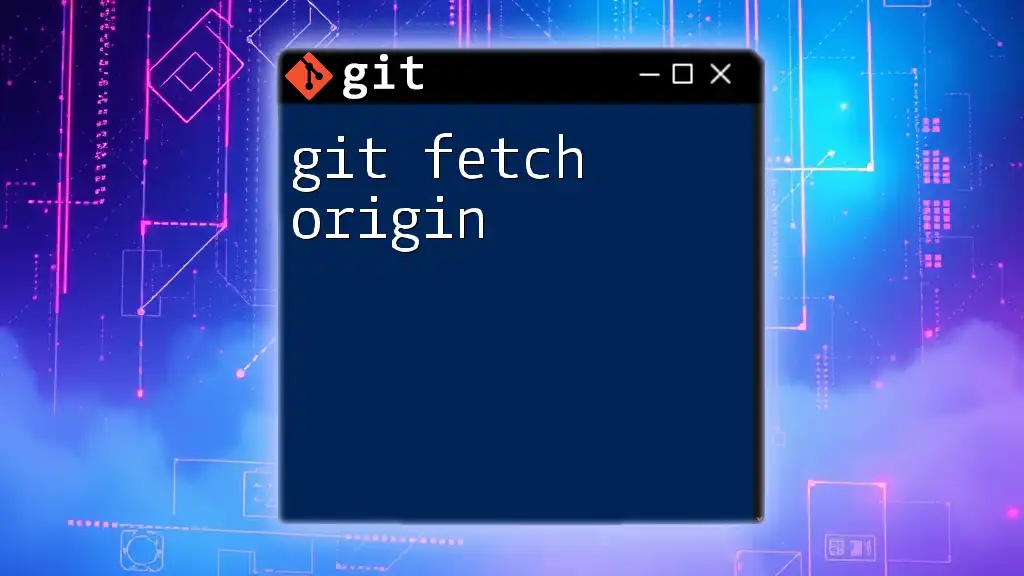
Fixing Common Git Fetch Issues
Solution for Network Problems
If network issues are to blame for git fetch not working, you might need to adjust your proxy settings. Git uses the HTTP proxy configuration if your organization requires it.
Example Commands to Check and Set HTTP Proxy:
git config --global http.proxy http://proxy-server:port
Resolving Authentication Issues
If you encounter authentication problems, especially with GitHub, creating and using a Personal Access Token can help you bypass these hurdles.
- Create a Personal Access Token from your GitHub account settings. Ensure you select appropriate scopes for the token.
- Update local credentials in your credential store to use the new token.
Correcting Remote Configuration
Sometimes, the remote configuration itself can be an issue. If you find that your current remote settings are incorrect or broken, you might need to remove and re-add your remote.
To remove a faulty remote, use:
git remote remove origin
Then, add it back with the correct URL:
git remote add origin <correct-repo-url>
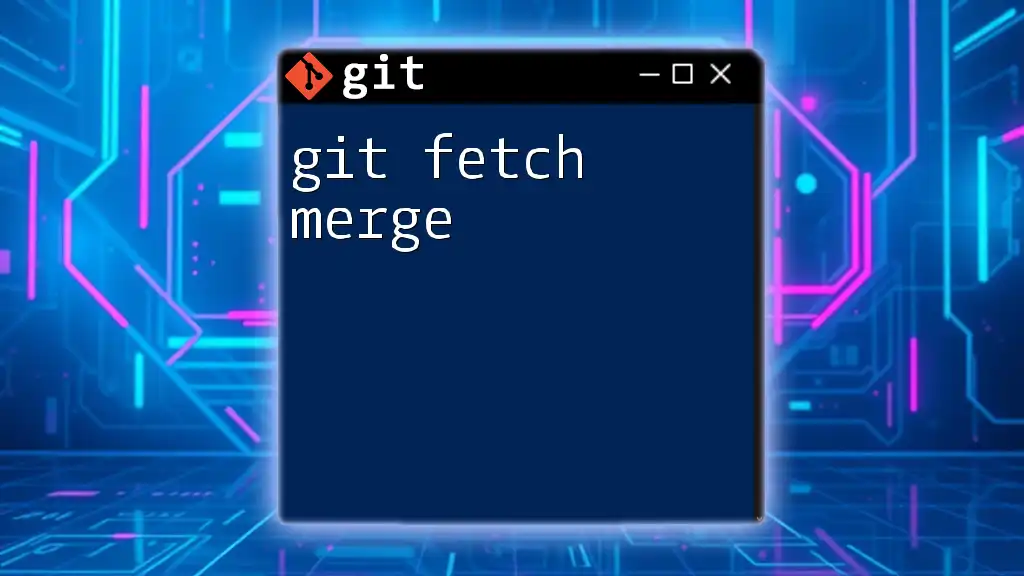
Best Practices for Using Git Fetch
Regularly Fetch Updates
In collaborative environments, it is vital to regularly fetch updates. This keeps you informed about any changes made by your team, allowing you to review and integrate updates without surprises.
Know When to Use `git pull` vs `git fetch`
Understanding when to use `git pull` compared to `git fetch` can save you time and headaches. Use `git fetch` when you want to review changes before merging them into your local work. Opt for `git pull` if you're confident that the incoming updates won't cause conflicts or issues.
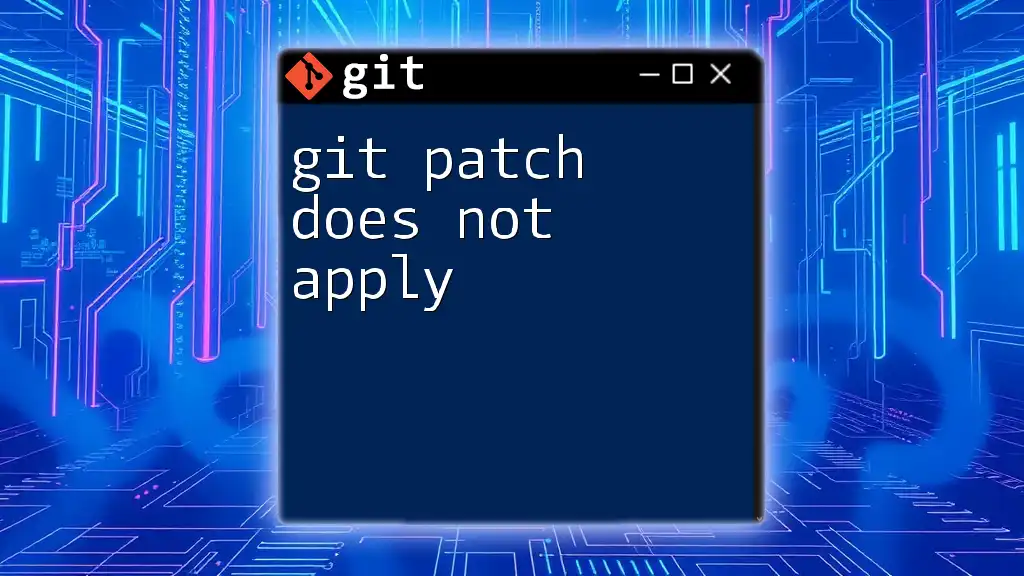
Conclusion
In this guide, we've examined the scenarios where git fetch doesn't work, and provided a structured approach to troubleshooting and resolving these issues. By understanding the various reasons and effectively applying the troubleshooting steps outlined, you can enhance your Git workflow and collaboration experience. With practice, you'll become adept at handling any challenges related to `git fetch`.
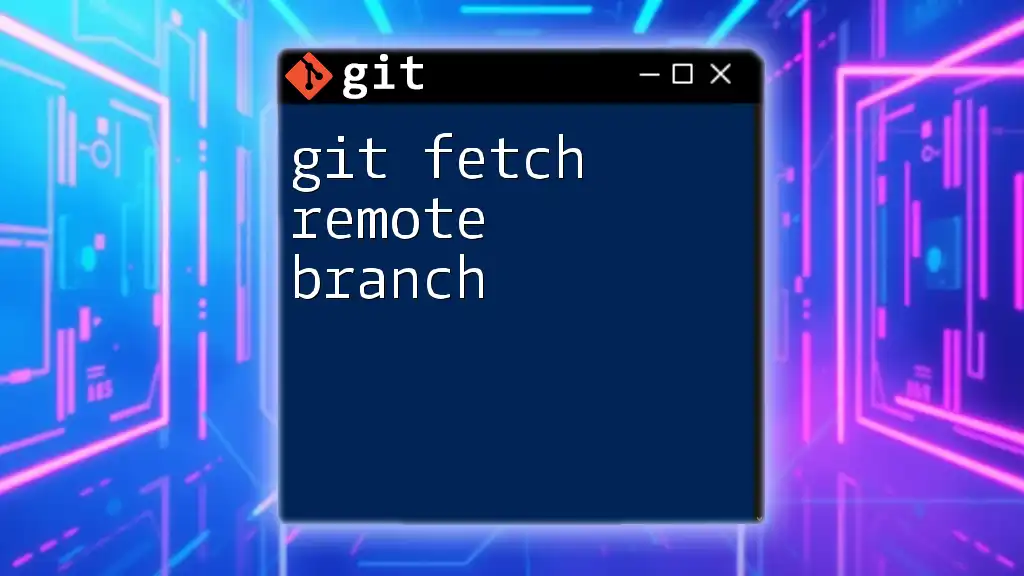
Additional Resources
- For in-depth guidance, check the official Git documentation.
- Dive into the Git community forums and support channels for help from experienced users.
By following these guidelines, you'll ensure that you make the most of Git's capabilities and maintain a smooth development process.

